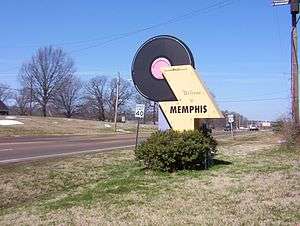National Civil Rights Museum
| National Civil Rights Museum | |
|---|---|
 The Lorraine Motel is part of the complex of the National Civil Rights Museum. The wreath marks Dr. King's approximate place at the time of his assassination. | |
| General information | |
| Town or city | Memphis, Tennessee |
| Country | United States |
| Coordinates | 35°08′04″N 90°03′27″W / 35.1345°N 90.0576°WCoordinates: 35°08′04″N 90°03′27″W / 35.1345°N 90.0576°W |
| Completed |
1920 (original building) 1960s |
The National Civil Rights Museum is a complex of museums and historic buildings in Memphis, Tennessee; its exhibits trace the history of the Civil Rights Movement in the United States from the 17th century to the present. The museum is built around the former Lorraine Motel, where Rev. Martin Luther King, Jr. was assassinated on April 4, 1968. Two other buildings and their adjacent property, also connected with the King assassination, have been acquired as part of the museum complex.
The museum re-opened in 2014 after renovations that increased the number of multi-media and interactive exhibits, including numerous short movies to enhance features. The museum is owned and operated by the Lorraine Civil Rights Museum Foundation, based in Memphis. The Lorraine Motel is owned by the Tennessee State Museum and leased long term to the Foundation to operate as part of the museum complex.
On October 21, 2016, the museum was honored by becoming a Smithsonian Affiliate museum.
History

The first hotel on the site was the 16-room Windsorlorrine Hotel, built on the northern side of the complex around 1925; it was renamed the Marquette Hotel. Walter Bailey purchased it in 1945 and renamed it for his wife Loree and the song "Sweet Lorraine". During the segregation era, he operated an upscale accommodation that catered to a black clientele. Bailey added a second floor, a swimming pool, and drive-up access for more rooms on the south side of the complex. He changed the name from Lorraine Hotel to Lorraine Motel. Among its guests through the 1960s were musicians going to Stax Records, including Ray Charles, Lionel Hampton, Aretha Franklin, Ethel Waters, Otis Redding, the Staple Singers and Wilson Pickett.[1]
Following the assassination of King, Bailey withdrew Room 306 (where King died) and the adjoining room 307 from use, maintaining them as a memorial to the activist leader. Bailey's wife Loree suffered a stroke hours after the assassination, and died five days later. Bailey reduced the operation by converting the other motel rooms to single room occupancy for low-income residential use.[1]
Establishing the memorial foundation
Bailey worked with Chuck Scruggs, program director of WDIA, and attorney D'Army Bailey, to raise funds to "Save the Lorraine." They worked with the Martin Luther King Memorial Foundation. The Foundation bought the motel for $144,000, following foreclosure in December 1982.
In 1984 the group changed the name of their organization to the Lorraine Civil Rights Museum Foundation. The Lorraine finally closed as an SRO motel on March 2, 1988. Sheriff's deputies were needed to evict the last holdout tenant, Jacqueline Smith, in preparation for an $8.8 million overhaul.[2] Bailey died in July 1988, before getting to see the results of his efforts to establish the museum.[3]
The Foundation worked with Smithsonian Institution curator Benjamin Lawless to develop a design to save historical aspects of the site. The Nashville, Tennessee firm McKissack and McKissack was tapped to design a modern museum on those portions of the grounds that were not directly related to the assassination.[1]
Museum opening in 1991
The museum was dedicated on July 4, 1991 and officially opened to the public on September 28, 1991.[1] D'Army Bailey was the founding president of the museum.[4]
In 1999 the Foundation acquired the Young and Morrow Building, and its associated vacant lot on the West side of Mulberry, as part of the museum complex. A tunnel was built under the lot to connect the building with the motel. The Foundation became the custodian of the police and evidence files associated with the assassination, including the rifle and fatal bullet. The latter are on display in a 12,800 sq. foot exhibit in the former Y & M building, which opened September 28, 2002.[1]
Renegotiation of lease with state in 2007
Through the years, there has been controversy over composition of the board of the museum Foundation and of the mission of the museum, as people have differing opinions. These issues came to a head in December 2007, as the museum foundation was asking the state, which owned the property, to extend its lease for 50-years rent-free. Bailey, a circuit court judge, said he was disappointed with the museum's emphasis on history. He said that he had envisioned it as an institution to inspire activism. By 2007, members of the board included whites from the corporate world. Bailey and other community activists criticized the board as "too white" and claimed they were shutting out the community. Beverly Robertson, then director of the museum, defended the board and the museum's operation.[4]
Gregory Duckett, a board member, disagreed with Bailey's interpretation, saying the museum was never designed as an activist institution. Robertson noted that many board members were African Americans who had been activists and also entered corporate life. In 2007, the state agreed to a 20-year lease, while taking over major maintenance of the complex. It required the museum board to hold annual public meetings and increase the number of African-American board members.[4]
2012 renovations
The main museum closed in November 2012 for a $27.5 million renovation, to include changes to exhibits and upgrades to building systems. The exhibits were updated for historical accuracy and to add to their evocative power; the work was guided by a group of recognized civil rights scholars. The building's renovations included replacement and repair of the HVAC and mechanical systems, expansion of the lobby, and creation of a new educational center. Many of the museum's most popular exhibits did not change, such as Room 306 (where Dr. King was staying when he died), the replica sanitation truck (Dr. King came to Memphis to support an AFSCME sanitation workers' strike), and the replica of the bus Rosa Parks rode in Montgomery, Alabama, before initiating the Montgomery Bus Boycott of 1955-56.
In the 2014 reopening, a major new exhibit featured is a replica of the U.S. Supreme Court room where oral argument was heard in 1954 in the seminal Brown v. Board of Education, in which the Court ruled that segregation in public schools was unconstitutional. This was a major victory for the civil rights movement. The museum has several interactive kiosks where patrons can access audio, images, text and video about the full civil rights movement. Visitors can search for text based on event, location, or theme. Many exhibits now feature "listening stations" where patrons with headphones can hear audio about the exhibit they are seeing; one features the voice of Malcolm X in a debate. More than 40 new short films throughout the museum also enhance the effect of the exhibits.[5] In addition, museum presentations stress that the work continues; this is history that is part of the present; for instance, with challenges continuing on voting rights and other civil rights.
The renovated museum opened to the public on April 5, 2014. The Associated Press review said, "The powerful, visceral exhibit[s set] the tone for an evocative, newly immersive museum experience that chronicles the history of the civil rights struggle in America."[5] King scholar Clayborne Carson of Stanford University said that the museum's renovations present "the best and most recent scholarship on civil rights available today."[5]
Location and complex

The complex is located at 450 Mulberry Street, with all properties except the Lorraine Motel owned by the Lorraine Civil Rights Museum Foundation. The motel is owned by the State of Tennessee and operated by the Foundation under a 20-year lease with the Tennessee State Museum in Nashville.
The main museum is located on the south edge of downtown Memphis in what is now called the South Main Arts District. It is about six blocks east of the Mississippi River. The main 4.14-acre (16,800 m2) site includes the museum, the Lorraine Motel, and associated buildings. The museum also owns the Young and Morrow Building at 422 Main Street. This was where James Earl Ray initially confessed (and later recanted) to shooting King. The complex includes Canipe's Amusement Store at 418 Main Street, next to the rooming house where the murder weapon with Ray's fingerprints was found. Included on these grounds is the brushy lot that stood between the rooming house and the motel.
Smith protest

At the end, the Lorraine Motel housed temporary guests and residents as an SRO. The last resident was Jacqueline Smith, who had lived there since 1973 while working for the motel as a housekeeper. When the motel was closed in 1988, Smith had to be forcibly evicted by sheriff's deputies. The neighborhood at the time around the Lorraine Motel was a lower-income, predominantly black area. Owners of these properties have demolished the houses, redeveloping the area with more expensive apartments and condominiums.[6] This was related to other rejuvenation of the downtown area[7][8] and the inclusion of the museum in the arts district.
Smith set up camp across the street and has maintained a protest vigil.[9] In 2010 she was quoted as saying that the Lorraine:
…should be put to better uses, such as housing, job training, free college, clinic, or other services for the poor...the area surrounding the Lorraine should be rejuvenated and made decent and kept affordable, not gentrified with expensive condominiums that price the people out of their community.[7]
She thought Dr. King would have objected to having $27 million spent on a building for him, and to evicting motel residents.[7][10] In 2014 Smith continued her protest vigil, regardless of weather.[6]
See also
- The Witness: From the Balcony of Room 306
- Birmingham Civil Rights Institute
- National Voting Rights Museum
- The Mountaintop (2009 play)
- List of museums in Tennessee
References
| Wikimedia Commons has media related to National Civil Rights Museum. |
- 1 2 3 4 5 Welcome to the website of the National Civil Rights Museum
- ↑ "Eviction Empties Motel Where Dr. King Died". The New York Times. March 3, 1988.
- ↑ "Walter Bailey, Lorraine Motel Owner, 73". The New York Times. July 7, 1988.
- 1 2 3 Audie Cornish, "Mission of National Civil Rights Museum Questioned", NPR story, 16 December 2007, accessed 13 February 2015
- 1 2 3 Associated Press (March 31, 2014). "National Civil Rights Museum in Memphis Reopening". New York Times. Retrieved March 31, 2014.
- 1 2 "A One-Woman Protest at the Lorraine Motel", Washington Post blog, 16 May 2014
- 1 2 3 Geov Parrish (2001-02-14). "The Longest Sit (February 14, 2001)". Eatthestate.org. Archived from the original on June 9, 2007. Retrieved 2010-05-05.
- ↑ Terry Dean. "Side Trip - Jacqueline Smith's personal, and private, crusade". Austinweeklynews.com. Retrieved 2010-05-05.
- ↑ Mark Jordan. "News Feature - April 2, 1998". The Memphis Flyer. Retrieved 2010-05-05.
- ↑ Douglas B. Chambers (October–Nov 1999). "This Dreamer Cometh: The National Civil Rights Museum". American Visions. ebscohost.com. 14 (5): 40. Retrieved 2010-05-05. Check date values in:
|date=(help)
External links
- National Civil Rights Museum
- National Civil Rights Museum — History, Hours, Prices, and Other Information
- TN History for Kids article about the museum
- Official website of Jacqueline Smith






